The e-commerce industry is moving faster than ever — and 2025 is shaping up to be a pivotal year. With new technologies emerging, consumer behaviors shifting, and global competition growing, simply running a good online store is no longer enough. Today’s successful e-commerce businesses are adaptive, data-driven, and forward-thinking.
Whether you’re a Shopify seller, a dropshipping entrepreneur, or managing an established online brand, staying ahead of industry trends is key to long-term success. In 2025, that means understanding how artificial intelligence, mobile shopping, sustainability, and next-gen customer experiences are transforming the way people buy and how brands sell.
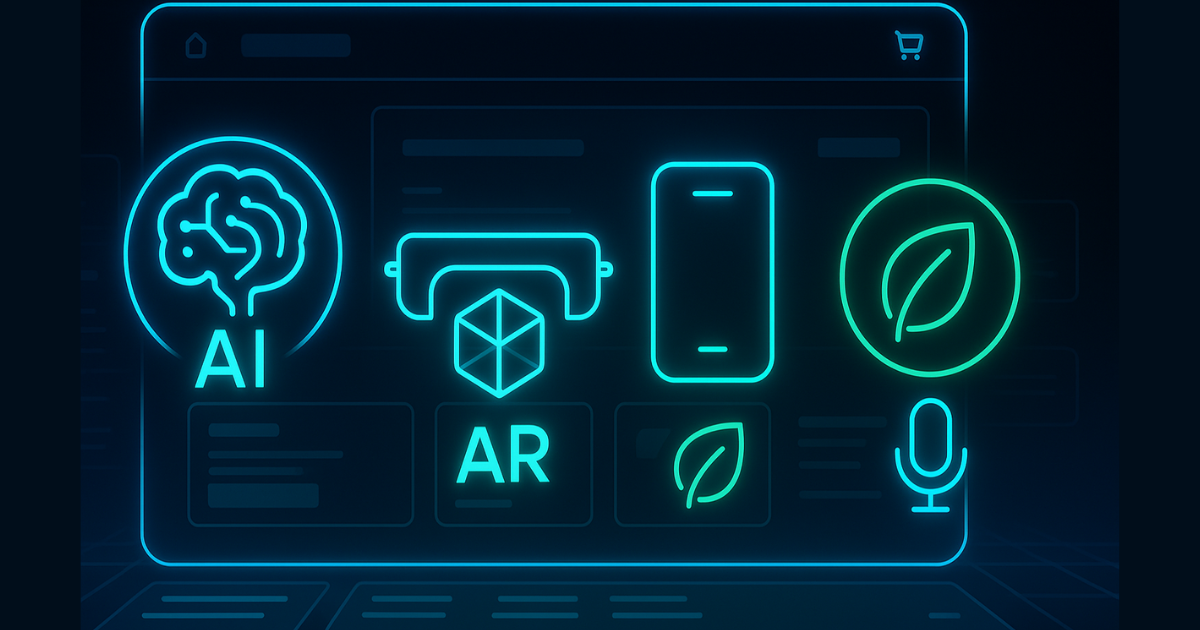
Businesses that fail to evolve risk becoming invisible.
Those that embrace change will dominate the market.
In this post, we’ll walk you through the top 10 e-commerce trends to watch in 2025. These aren’t buzzwords — they’re actionable shifts already shaping the future of online retail. From AI personalization to live shopping, voice commerce, and mobile-first design, you’ll discover where the market is headed — and how to position your business for growth.
Let’s dive into the trends redefining the future of digital commerce.
AI-Powered Personalization
In 2025, one-size-fits-all marketing is officially obsolete. Today’s consumers expect online experiences tailored to their interests, habits, and preferences — and brands that fail to deliver risk being ignored. That’s where AI-powered personalization comes in.
Using advanced machine learning algorithms, modern e-commerce platforms now collect and analyze data from browsing behavior, purchase history, engagement patterns, and even real-time interactions. This allows stores to deliver hyper-personalized experiences — from product recommendations to email content, dynamic pricing, and custom landing pages.
What Does AI Personalization Look Like?
- Real-time product suggestions based on user behavior
- Dynamic website content that changes for different visitors
- Smart email campaigns triggered by customer intent
- Predictive analytics to forecast what products a customer may want next
- Personalized ads that retarget based on shopping behavior
According to a recent survey, 80% of consumers are more likely to buy from brands that offer personalized experiences. And with AI doing the heavy lifting, personalization no longer requires a full marketing team — just the right tools.
Tools Leading the Way:
- Shopify Magic – Shopify’s AI engine for personalized shopping and admin assistance
- Klaviyo AI – Automates audience segmentation and behavior-based email flows
- Nosto – Advanced personalization engine for product discovery
- Dynamic Yield – Enterprise-level A/B testing and product personalization
Benefits for E-Commerce Stores:
- Increases conversion rates and average order value
- Improves customer satisfaction and loyalty
- Reduces bounce rates and abandoned carts
- Creates a competitive edge with minimal human effort
In 2025, AI personalization is not just an advantage — it’s the expectation. Brands that understand their customers on an individual level will earn their attention, trust, and long-term business.
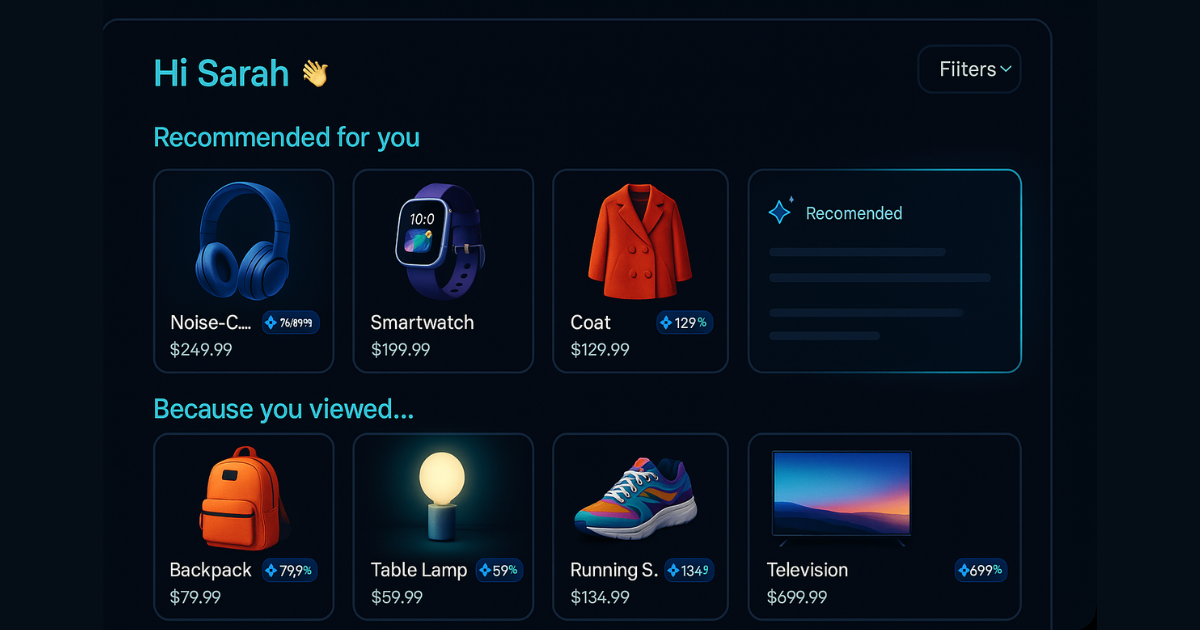
Voice Commerce Is Going Mainstream
“Hey Alexa, reorder my protein powder.”
“OK Google, find me a black leather backpack under $100.”
Welcome to the age of voice commerce — where shopping happens with a single command.
In 2025, voice-enabled shopping is no longer futuristic — it’s increasingly becoming part of everyday life. With millions of homes and smartphones now equipped with smart assistants like Amazon Alexa, Google Assistant, and Apple’s Siri, consumers are using their voices to search for products, check prices, place orders, and manage reorders — all without typing a single word.
Why Voice Commerce Matters in 2025
- Speed: Voice search is faster than typing, especially on mobile
- Convenience: Hands-free shopping is ideal for multitaskers and busy lifestyles
- Personalization: Smart assistants remember preferences and shopping history
- Accessibility: Voice interfaces offer improved access for visually impaired or elderly shoppers
According to Statista, the number of digital voice assistant users is projected to reach over 8.4 billion globally by 2025 — more than the global population. As usage grows, e-commerce brands are optimizing their product listings, SEO, and checkout flows to support voice interactions.
How to Prepare Your Store:
- Optimize product descriptions for natural language search
- Use structured data and schema markup for better voice SEO
- Ensure your site is mobile-friendly and loads quickly
- Integrate with platforms like Amazon, Google Shopping, or voice-ready apps
- Consider developing a custom voice skill or shopping action
Benefits for E-Commerce Sellers:
- Reaches new audiences through smart speakers and assistants
- Drives repeat purchases via voice reorders
- Increases brand trust and accessibility
- Enhances the customer journey with minimal friction
Voice commerce is still evolving, but its momentum is undeniable. Early adopters who optimize for voice interactions now will gain a long-term advantage as the technology becomes standard across shopping environments.

Live Shopping & Shoppable Video
Forget static product pages — in 2025, entertainment and e-commerce are merging, and it’s changing how consumers discover and buy. Enter live shopping and shoppable video — where real-time engagement drives instant conversions.
Live commerce originated in China, but global platforms like TikTok, Instagram, YouTube, and Amazon have adopted it aggressively — making it a fast-growing sales channel. Influencers, brand reps, and even small business owners now go live to showcase products, demo features, and interact with viewers, all while shoppers can purchase instantly with a tap.
Why Live Shopping Works:
- Real-time engagement builds trust and drives impulse buys
- Product demonstrations reduce purchase hesitation
- Interactive chats and polls boost viewer participation
- Limited-time offers during streams increase urgency
- Authentic storytelling beats polished ads
It’s not just big brands cashing in. Small businesses and solopreneurs are seeing strong ROI from livestreams — especially when they tie into TikTok Shop, YouTube Shopping, or Instagram Live.
Tools & Platforms Leading the Way:
- TikTok Shop LIVE – Seamless shopping experience during influencer or brand livestreams
- Instagram Live Shopping – Tag products in real-time during a live broadcast
- YouTube Shopping – Shoppable product carousel below live or recorded videos
- Shopify + CommentSold – Integrations for live selling with automated checkout
Benefits for E-Commerce Brands:
- Increases conversion rates through immersive, real-time content
- Strengthens brand connection with a human touch
- Replaces expensive video ads with organic community building
- Generates multi-channel content (repurpose lives as reels, shorts, etc.)
In 2025, consumers want more than just product specs — they want experiences. Live shopping turns your store into a show, and your audience into buyers.
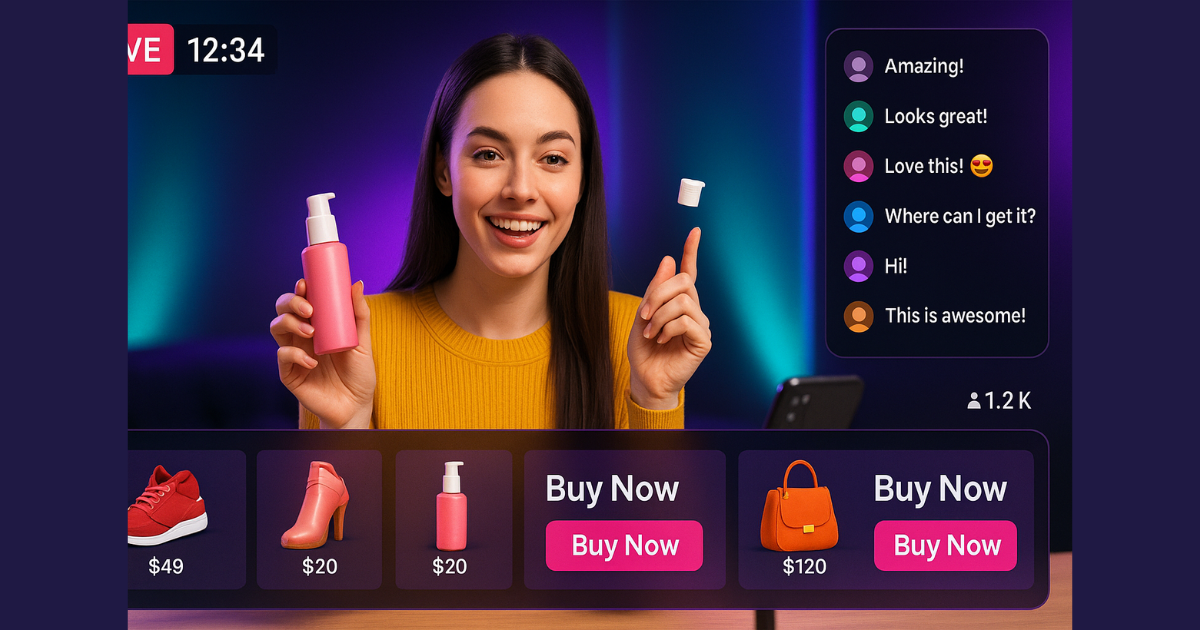
AR & Virtual Try-Ons
In 2025, seeing is believing — and thanks to Augmented Reality (AR), online shoppers can now try before they buy without ever stepping into a store. Whether it’s testing how a sofa looks in their living room or previewing how a pair of glasses fits their face, virtual try-ons are revolutionizing e-commerce UX.
Augmented Reality bridges the gap between physical retail and digital convenience. With AR, shoppers can visualize products in 3D, interact with them in real space, and make more confident decisions — reducing returns and boosting trust.
How AR Is Reshaping Online Shopping:
- Virtual try-ons for fashion, eyewear, makeup, and accessories
- Product previews for furniture, decor, and home appliances
- 3D product views that allow full rotation and scale in real time
- Interactive filters to see variations like color, size, or texture on models
- Room placement tools using smartphone cameras (IKEA, Wayfair, Amazon)
Platforms & Tools Leading the AR Revolution:
- Shopify AR – Enables merchants to add 3D models and AR to product pages
- Snap AR / Lens Studio – Custom AR try-ons via Snapchat filters
- YouCam Makeup – AI + AR try-ons for cosmetics brands
- Amazon AR View – Visualizes products in real-world spaces through mobile
Benefits for E-Commerce Brands:
- Increases buyer confidence → fewer abandoned carts
- Reduces returns by letting customers preview products accurately
- Enhances brand credibility with cutting-edge UX
- Encourages longer sessions and higher engagement on product pages
Retailers adopting AR today are already reporting 20–30% increases in conversion rates. As smartphones and AR technology continue to improve, offering a virtual try-on experience will soon be as essential as mobile optimization.
If your store sells fashion, beauty, furniture, or accessories, AR isn’t a luxury — it’s a must-have.

One-Click Checkout & Digital Wallets
Speed and convenience win in 2025 — especially at the checkout. In an age of shrinking attention spans and rising mobile purchases, a frictionless payment experience can be the difference between a sale and an abandoned cart. That’s why one-click checkout and digital wallets are now essential features for any serious e-commerce store.
Buyers expect to complete purchases in just a few taps — no forms, no logins, no delays. The more steps you make them take, the more likely they’ll drop off.
What’s Driving the Checkout Evolution?
- Consumers are increasingly shopping on mobile devices
- Shoppers trust Apple Pay, Google Pay, and PayPal over entering card details
- Newer platforms like Shop Pay and Amazon Pay store user info securely for fast repeat purchases
- One-click checkout reduces checkout time by up to 60%, boosting conversions
One-Click Checkout Platforms:
- Shop Pay (by Shopify) – Saves shipping/payment info across stores
- Bolt – One-click checkout for non-Shopify platforms
- Fast (discontinued but inspired future solutions)
- PayPal Express Checkout – Simple login, no form-filling
- Amazon Pay – Trusted and familiar to millions
Benefits for Your E-Commerce Store:
- Higher conversion rates, especially on mobile
- Fewer abandoned carts from impatient or distracted users
- Enhanced trust with secure, recognizable payment options
- Better UX = stronger customer loyalty and repeat sales
What to Avoid:
- Forcing account creation before checkout
- Long forms and unnecessary input fields
- Limited payment methods that don’t include mobile-first options
In 2025, your checkout process should be as seamless as your product pages.
If it takes more than 30 seconds to complete a purchase — you’re losing customers.
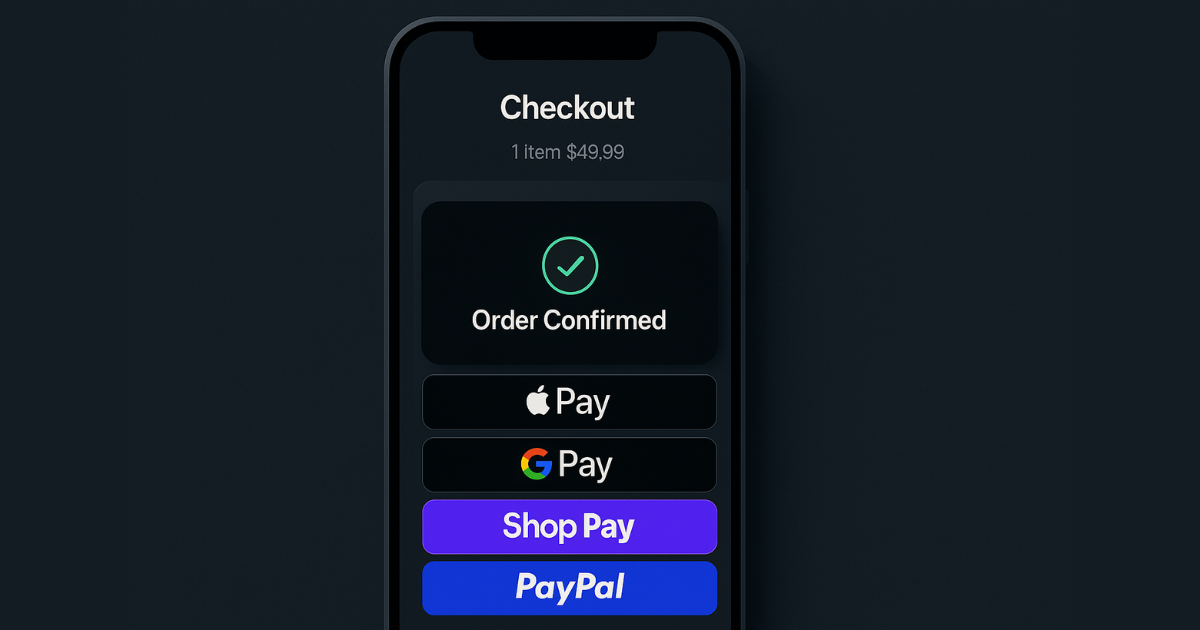
Mobile-First Commerce
In 2025, mobile isn’t just a channel — it’s the primary storefront. With over 73% of all e-commerce transactions happening on mobile devices, brands that don’t prioritize mobile-first design are falling behind. Today’s shoppers browse, compare, and buy — all from the palm of their hands.
The rise of social commerce, digital wallets, and mobile shopping apps has shifted the buyer journey. If your online store isn’t built for mobile-first interactions, you’re likely losing both sales and credibility.
Why Mobile-First Matters:
- Mobile traffic has surpassed desktop for years — and continues to grow
- Consumers are more likely to buy when the mobile experience is fast and intuitive
- Mobile shoppers expect app-like navigation, instant load times, and tap-friendly design
- Google uses mobile-first indexing, meaning your mobile site affects your search ranking
Mobile Optimization Essentials:
- Responsive design that adjusts perfectly to all screen sizes
- Progressive Web Apps (PWA) for an app-like experience without requiring downloads
- Sticky CTAs, quick-access menus, and thumb-friendly layouts
- Lazy loading and image compression to reduce load time
- Integrated mobile payment options like Apple Pay and Google Pay
Benefits of Mobile-First Design:
- Higher conversions on smartphones and tablets
- Improved SEO and lower bounce rates
- Faster user journeys from discovery to checkout
- Better performance across all devices, not just mobile
Whether you’re selling fashion, digital goods, or home decor, your customers are visiting your store while commuting, scrolling in bed, or waiting in line — and they expect lightning-fast, intuitive experiences every time.
In 2025, mobile-first isn’t just best practice.
It’s the bare minimum for e-commerce success.
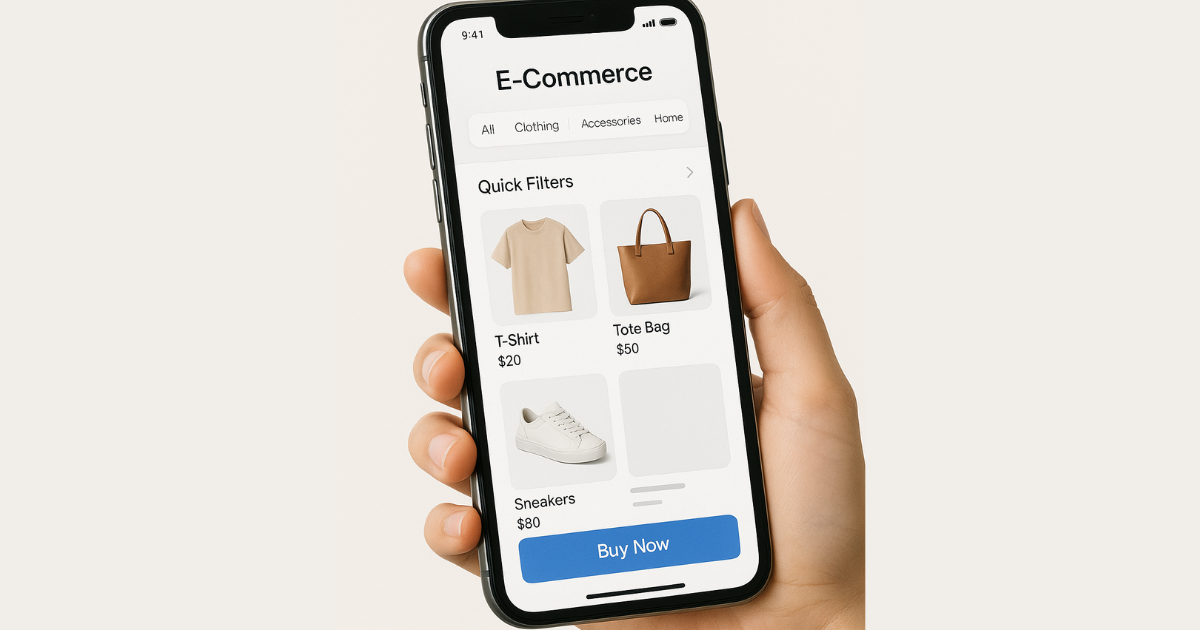
Sustainable & Ethical Shopping
In 2025, consumers aren’t just buying products — they’re buying values. The modern shopper, especially Millennials and Gen Z, is increasingly drawn to brands that align with ethical and environmental principles. This shift is driving a massive rise in sustainable and transparent e-commerce.
Today’s customers want to know:
- Where products are made
- How materials are sourced
- What environmental impact their purchase has
- Whether the brand supports fair labor and ethical production
Brands that provide eco-friendly options, transparent supply chains, and authentic values are gaining attention — and sales.
Why Sustainability Drives Conversions:
- 73% of Gen Z say they’re willing to pay more for sustainable products
- Brands with sustainability messaging see higher customer retention
- Positive values = positive branding → increased word-of-mouth
Key Sustainability Practices for E-Commerce:
- Eco-friendly packaging (biodegradable, recycled, or minimal waste)
- Carbon-neutral shipping and delivery options
- “Conscious collections” or curated ethical product lines
- Transparency through certifications (Fair Trade, Organic, Cruelty-Free)
- ReCommerce (secondhand or upcycled products) and take-back programs
Tools & Apps That Help:
- EcoCart – Add carbon-neutral checkout options to your store
- Planet (by Shopify) – Calculate and offset carbon emissions from every order
- Package Free Shop – Sustainable marketplace model
- Verdn – Attach real-time tree planting or ocean cleanup metrics to each purchase
Benefits for E-Commerce Brands:
- Stronger connection with values-driven customers
- Competitive edge in saturated markets
- Boosts brand story, trust, and social media traction
- Reduces return rates when buyers feel aligned with the brand mission
Sustainability is no longer a niche — it’s a mainstream expectation.
If your brand isn’t thinking green, your customers might look elsewhere.

AI Customer Support & Chatbots
In 2025, instant customer support isn’t optional — it’s expected. Whether it’s answering product questions, resolving order issues, or guiding a shopper to the right item, customers want help now. That’s where AI-powered chatbots and virtual assistants become essential for every e-commerce business.
Unlike human support agents, AI chatbots work 24/7, scale instantly, and can handle thousands of queries without fatigue. Modern tools use natural language processing (NLP) to provide intelligent, human-like responses that improve over time — enhancing both efficiency and customer experience.
What AI Support Looks Like in E-Commerce:
- Instant answers to FAQs, product details, and shipping policies
- Personalized product recommendations based on browsing behavior
- Automated order tracking and status updates
- Pre-sale engagement that nudges visitors toward a purchase
- Post-sale support including refunds, returns, and feedback collection
Top AI Support Tools in 2025:
- Tidio AI – Combines live chat, chatbot flows, and automation for Shopify/WooCommerce
- Gorgias – Helpdesk platform powered by AI with Shopify integration
- Intercom AI – Conversational support with smart workflows and CRM integration
- Zendesk AI – Enterprise-grade support system with machine learning and live agents
Benefits for Online Stores:
- Reduces response time to near-zero
- Saves costs by reducing dependency on full-time support staff
- Increases conversions by guiding hesitant buyers in real-time
- Boosts customer satisfaction with consistent, always-available help
More importantly, smart chatbots are getting smarter. Thanks to advanced AI training, they now understand tone, intent, and even context — making them feel less robotic and more helpful than ever.
In 2025, AI-powered customer support isn’t just a tool — it’s your frontline sales and service team.
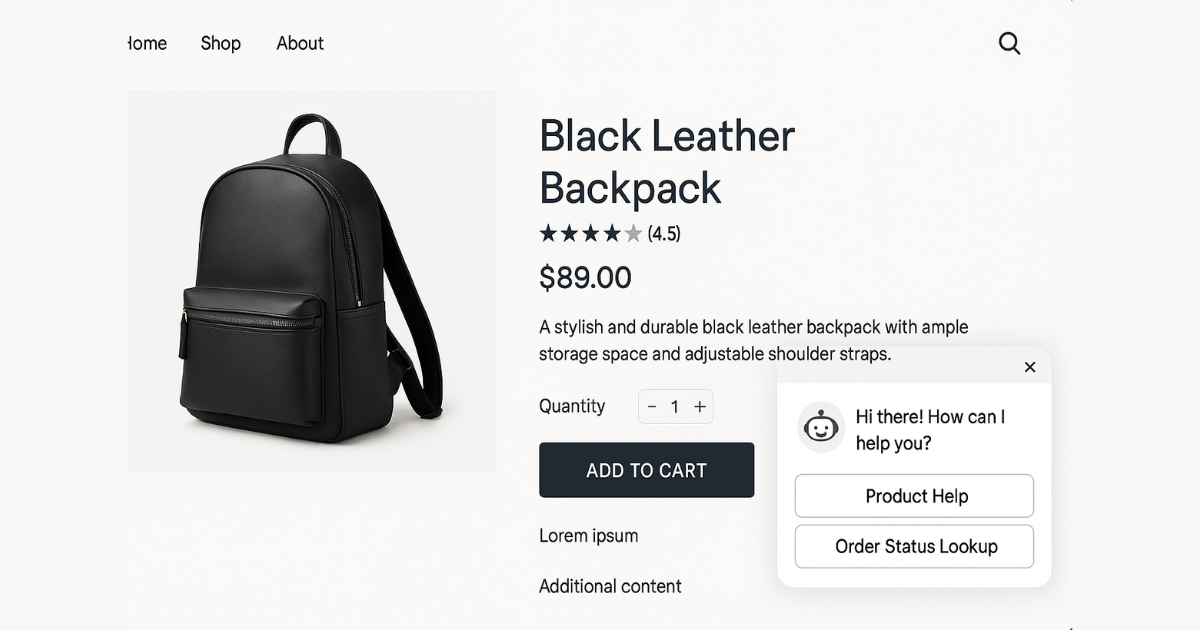
Social Commerce Domination
Social media is no longer just for discovery — it’s now a full-fledged shopping destination. In 2025, platforms like TikTok, Instagram, Facebook, and Pinterest are transforming into seamless e-commerce ecosystems, allowing users to browse, shop, and check out without ever leaving the app.
This shift is called social commerce — and it’s exploding. It combines the power of influencer marketing, user-generated content (UGC), short-form video, and integrated storefronts to create high-converting, community-driven sales channels.
Why Social Commerce Is Thriving:
- Social feeds now double as product discovery engines
- Shoppers trust content from creators more than branded ads
- Built-in trust signals (likes, comments, shares) influence buying decisions
- Platforms are pushing commerce features to increase in-app retention
In fact, TikTok’s data shows that “TikTok made me buy it” is not just a trend — it’s a behavior. When users see relatable content and authentic reviews, they’re more likely to make an impulse purchase without leaving the platform.
Key Social Commerce Tools & Features:
- TikTok Shop – Add product links to videos, live streams, and bios
- Instagram Shopping – Tag products in posts, stories, and Reels
- Facebook Shops – Full storefronts inside business pages
- Pinterest Product Pins – Shoppable pins with real-time pricing and availability
- YouTube Shopping – Link products below videos or during live streams
Benefits for E-Commerce Brands:
- Reach customers where they already are
- Shorten the buyer journey — from scroll to checkout
- Increase conversion rates through interactive, visual content
- Boost social proof through real-time engagement and UGC
In 2025, your social content is your storefront.
If you’re not selling directly through social platforms, you’re missing the most powerful traffic and conversion engine of the decade.
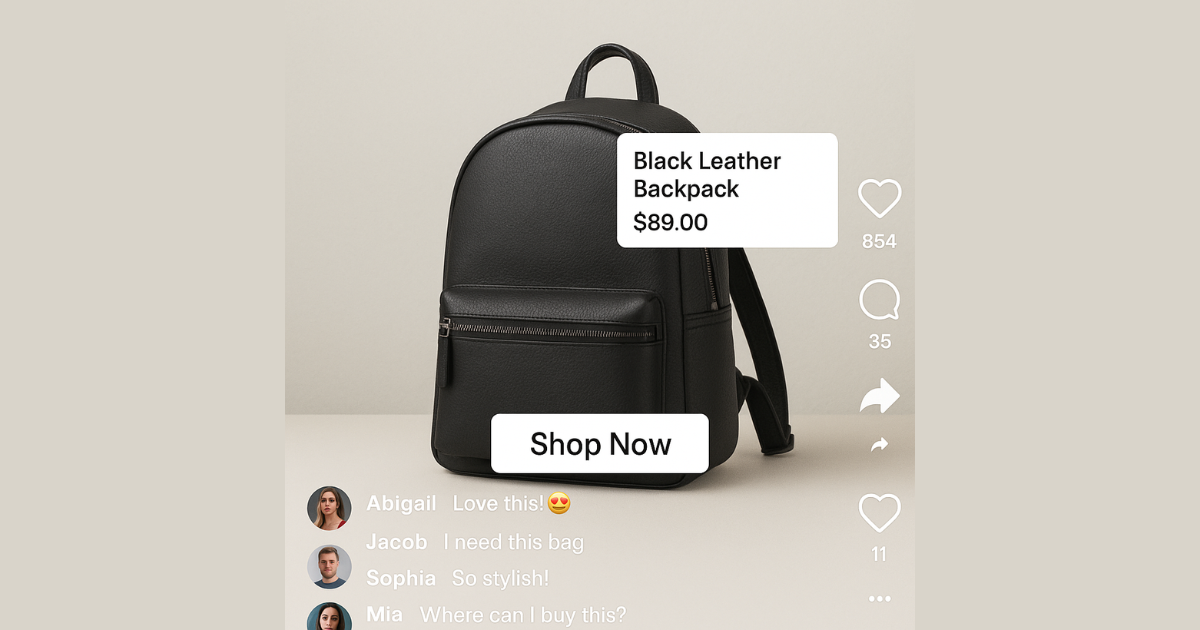
Subscription-Based Models Are Growing
In 2025, more online shoppers are choosing “subscribe” over “buy once.” From coffee and skincare to pet supplies and clothing, the subscription economy is booming — and e-commerce brands are cashing in on this loyalty-driven, revenue-stabilizing model.
Subscription-based commerce isn’t just for SaaS companies anymore. It’s now a major retail trend that helps merchants increase customer lifetime value (CLV), reduce churn, and create predictable income streams.
Why Subscriptions Are So Popular:
- Consumers value convenience — set it and forget it
- Brands offer discounts and perks to encourage ongoing purchases
- Subscriptions create habit-forming relationships
- Great for consumables, replenishable products, and curated experiences
Whether it’s a monthly self-care box or a recurring shipment of protein powder, subscriptions turn casual buyers into committed fans.
Tools That Make It Easy:
- Shopify Subscriptions API – Native recurring payment support
- Recharge – Powerful subscription management for Shopify and BigCommerce
- Bold Subscriptions – Easy to implement, with upsells and trial features
- Skio – Headless subscription platform with a seamless customer experience
Benefits for E-Commerce Businesses:
- Recurring revenue = financial stability
- Increased customer retention
- Better forecasting for inventory and growth
- Ability to build loyalty through rewards, surprise boxes, and VIP perks
- Lower CAC (Customer Acquisition Cost) through extended value per user
Subscription e-commerce revenue is projected to exceed $65 billion by the end of 2025.
Now is the time to implement a model that locks in loyalty — not just one-time purchases.

E-commerce in 2025 is more dynamic, competitive, and opportunity-rich than ever before. Success no longer hinges on just having great products — it’s about delivering fast, personalized, ethical, and engaging experiences across every touchpoint.
Let’s quickly recap the 10 trends shaping the future of online shopping:
- AI-Powered Personalization – Smart, data-driven experiences that convert
- Voice Commerce – Hands-free shopping with smart assistants
- Live Shopping & Shoppable Video – Real-time, interactive buying experiences
- AR & Virtual Try-Ons – Try-before-you-buy through augmented reality
- One-Click Checkout & Digital Wallets – Frictionless, fast payments
- Mobile-First Commerce – Optimized shopping for the modern buyer
- Sustainable & Ethical Shopping – Values-driven consumer decisions
- AI Customer Support & Chatbots – Instant, 24/7 intelligent help
- Social Commerce – Seamless selling through TikTok, Instagram & more
- Subscription Models – Recurring revenue, better retention, stronger loyalty
Whether you’re running a Shopify store, dropshipping business, or scaling your own product line, embracing even a few of these trends can help you future-proof your store, increase conversions, and delight your customers.

The future of e-commerce isn’t coming — it’s already here.
The brands that adapt early will lead the pack.
What’s Next?
✅ Audit your current e-commerce setup — Which of these trends are you already using?
✅ Pick 2–3 trends to implement in the next 90 days
✅ Subscribe to our blog for more strategies, tools, and insights
✅ Share this post with other store owners or e-commerce teams who need to stay ahead
